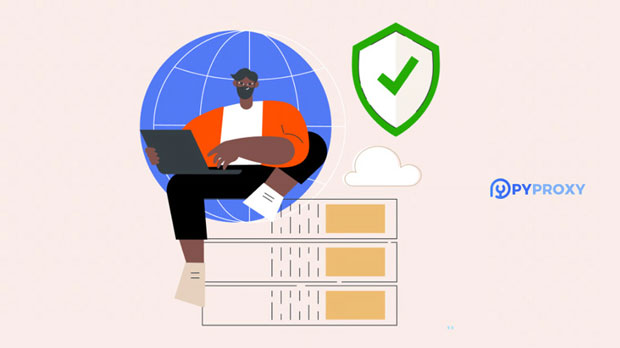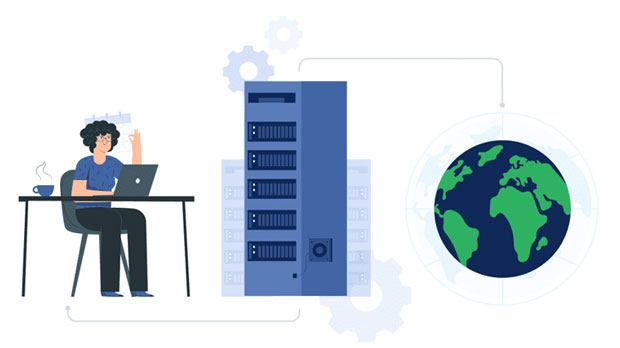In the modern Internet environment, users' requirements for network performance are increasing, especially in large-scale data transmission or processing, the stability and speed of the connection are particularly important. residential proxy SOCKS5 (also known as socks5 proxy), as a common proxy technology, has become a widely used solution in various scenarios due to its advantages such as privacy protection and breaking through network restrictions. So, does the residential agent SOCKS5 support high-speed connections and big data transmission? This is not only an exploration of its technical capabilities, but also related to how to choose the most suitable type of agent in practical applications, especially when facing high traffic demandsThis article will conduct an in-depth analysis of the technical characteristics of residential agent SOCKS5, explore its ability to support high-speed connections, as well as the challenges and advantages it may face in big data transmission. By comparing the performance of different types of proxies, help users understand why SOCKS5 may be a suitable choice for high demand applications, especially in terms of the advantages and limitations demonstrated in data transmission and large-scale network operations1. Basic concepts and characteristics of residential agent SOCKS5 Before delving into whether residential proxy SOCKS5 supports high-speed connections and big data transmission, we first need to have a basic understanding of SOCKS5 proxy and its "residential proxy" featureSOCKS5 (Socket Secure 5) is a network protocol designed to facilitate communication between a client and a target server through a proxy server, enabling data transmission through various protocols such as TCP and UDP. Unlike traditional HTTP proxies, socks5 proxies do not require data parsing and can support various types of network traffic, including web browsing, file transfer, video streaming, and more. Therefore, SOCKS5 can provide a wider range of adaptability while retaining high privacy and flexibilityResidential agency "refers to a proxy service that replaces data center IP by providing a residential network with dynamic IP addresses. Compared with data center agents, residential agents can better simulate the Internet behavior of ordinary users and reduce the risk of being blocked or restricted by the target website. Therefore, residential agent SOCKS5 can improve access stability and anonymity while ensuring security2. Residential agent SOCKS5 supports high-speed connectivity technology backgroundWhether the residential agent SOCKS5 supports high-speed connections first needs to be analyzed from multiple dimensions such as its protocol characteristics, transmission efficiency, and network environment2.1 SOCKS5 protocol characteristics and data transmission efficiencyThe transmission efficiency of SOCKS5 proxy is closely related to its protocol characteristics. Compared to other proxy protocols such as HTTP proxy, SOCKS5 has more flexible data processing capabilities. It not only supports TCP and UDP protocols, but can also handle higher complexity data traffic. SOCKS5 can transmit data more directly without excessive parsing and modification, thereby reducing processing time and latencyIn addition, SOCKS5 also supports forwarding UDP packets, which is of great significance for real-time applications such as video streaming and online gaming. Due to the simplicity of the SOCKS5 protocol, proxy servers have lower latency when transmitting data, which helps to improve connection speed and meet high bandwidth requirements2.2 Bandwidth and Stability of Residential AgentsAlthough SOCKS5 itself does not directly limit data transmission speed, the bandwidth and stability of residential agents have a significant impact on their ability to support high-speed connections. Residential agents typically rely on the broadband connection of ordinary households, so their bandwidth is limited by the performance of the household network. Compared to data center agents, residential agents may have lower bandwidth and latency, which means that the speed of residential agent SOCKS5 may be limited during high traffic transmissionHowever, residential proxy SOCKS5 typically adopts a distributed network architecture, which helps to increase the overall bandwidth capacity of the proxy server. By using multiple nodes and servers, proxy service providers can improve connection stability and data transmission speed to a certain extent. In addition, many high-quality residential agency services offer proxy IP options for different regions, allowing users to choose nodes closer to the target server according to their needs, thereby further optimizing connection speed2.3 Network Congestion and Bandwidth ManagementThe speed of residential agent SOCKS5 may also be affected by network congestion and bandwidth management. During high traffic periods, certain proxy IPs may be overused, resulting in scarce bandwidth resources and affecting data transmission rates. Therefore, selecting high-quality proxy service providers and regularly monitoring the performance status of proxy IPs can effectively avoid the decrease in transmission speed caused by network bottlenecks3. Challenges and advantages in big data transmissionFor scenarios that require big data transmission, the advantages and limitations of residential agent SOCKS5 are even more prominent. Big data transmission typically demands higher bandwidth, latency, and stability, thus requiring a balance of adaptability between different technologies3.1 Bandwidth Limitations and Big Data ProcessingLarge scale data transmission requires high bandwidth and stability, and residential proxy SOCKS5 faces certain challenges in this regard. Due to the fact that the IP addresses of residential agents usually come from regular home networks, their bandwidth limitations are more pronounced. When transmitting big data, there may be slow speeds or unstable connectionsTo address this issue, many proxy service providers will adopt high-quality residential networks or provide optimized network environments to minimize bandwidth bottlenecks. At the same time, users can choose multiple proxy IPs for load balancing, distributing data transmission to different proxy servers, thereby improving overall transmission speed and stability3.2 Proxy hops and data transmission efficiencyWhen conducting big data transmission, the hop count of the proxy server can also affect transmission efficiency. The more hops there are, the more intermediate nodes the data transmission goes through, and the transmission delay will also increase accordingly. Although SOCKS5 itself has low latency characteristics, in complex network environments, a large number of proxy hops may affect the speed and stability of data transmissionTherefore, in response to the demand for big data transmission, selecting residential proxy SOCKS5 nodes with fewer hops is an optimization strategy. In addition, combining with high-speed CDN (Content Delivery Network) technology can further improve transmission efficiency3.3 Security and Data IntegrityIn the process of big data transmission, data integrity and security are crucial. Residential agent SOCKS5 can effectively ensure the security of data during transmission through encrypted transmission and anonymous functions. Meanwhile, socks5 proxy servers can ensure lower packet loss rates and higher transmission success rates, thereby improving the reliability of big data transmissionHowever, the larger the amount of data transmitted, the higher the requirements for proxy servers, which may require more bandwidth and higher hardware performance. Therefore, choosing a high-performance residential proxy server and ensuring that it has sufficient processing capacity is an important condition for ensuring smooth transmission of big data4. Select the applicable scenarios and suggestions for residential agent SOCKS5Whether residential agent SOCKS5 is suitable for high-speed connections and big data transmission depends on specific application scenarios and requirements. In some cases, SOCKS5 proxy can provide sufficient bandwidth and stability to support high-speed connections, while in other cases, it may be limited by bandwidth and network latency4.1 Applicable scenarios for high-speed connectionsFor scenarios that require high privacy protection and stability, residential agent SOCKS5 is a suitable choice. For example, when conducting large-scale web crawling, data scraping, or SEO optimization operations, SOCKS5 can avoid IP blocking while providing relatively stable connection speed and high anonymity4.2 Applicable scenarios for big data transmissionWhen conducting big data transmission, if high transmission speed is required, it may be considered to choose a dedicated proxy service or data center proxy with larger bandwidth. In large-scale data transmission, the speed and stability of SOCKS5 may not be able to meet the requirements of large data volumes. Therefore, reasonable combination of proxy IP, optimization of transmission paths, and adoption of load balancing technology can effectively improve overall efficiency4.3 Comprehensive SuggestionsFor general network applications, residential agent SOCKS5 has good support capabilities. However, in special circumstances, especially in big data transmission scenarios, users can choose more specialized proxy solutions according to their actual needs. Combining high-speed proxy, load balancing, and multi IP strategies can effectively compensate for the bandwidth limitations of SOCKS5SummaryResidential agent SOCKS5 has certain advantages in high-speed connectivity and big data transmission, but also faces challenges in bandwidth and stability. When choosing whether to use residential agent SOCKS5, users should make their choice based on their actual needs, transmission volume, and network environment. Although residential agent SOCKS5 can provide higher anonymity and lower blocking risk, its bandwidth and stability may be affected by the quality of the IP pool. Therefore, users should pay attention to the IP quality, response speed, and whether they support high bandwidth requirements when choosing a proxy provider. For users who require frequent big data transmission or high-speed connections, choosing a stable and high-performance proxy service provider is crucial
Jan 08, 2025
![arrow]()



















































